Chronology: Maryland and Israel Part 2, 1900 to 1950

Compiled by Avi Y. Decter and Dr. Deborah R. Weiner. Originally published in Generations 2007-2008: Maryland and Israel.
Missed part 1? Start here.
1903
German-speaking Baltimore Jews organize the Theodor Herzl Zionistischer Verein (Zionist Association), the first German-speaking Zionist organization in America. A leading Reform rabbi, William Rosenau, declares: “I believe that one can be a good reform Jew and be a Zionist.” Two of the organization’s founders, Dr. Harry Friedenwald (Aaron’s son) and Henrietta Szold, will play major roles in the history of Zionism, nationally and internationally.
Baltimore Jews also organize Kadima, a vigorous Zionist group that also concerns itself with local Jewish problems, creating a bridge between the Zionist movement and the community as a whole.
1904

Dr. Harry Friedenwald (b. 1864) of Baltimore is elected the second President of the Federation of American Zionists, serving until 1917 and as honorary President until his death in 1950.
1996.010.064 – Photograph of Harry Friedenwald, with inscription to Louis L. Kaplan.
1905

In December, a recent immigrant to Baltimore from Lithuania, Herman Seidel (1884-1969), organizes in Baltimore the first national convention of the Poale Zion (Zionist Workers) organization with 22 delegates in attendance. The Labor Zionist movement supports kibbutzim (cooperative settlements), the labor union Histadrut, and worker-owned businesses in Palestine. Every Friday night, Seidel attracts a crowd to his soapbox on a corner in East Baltimore, where he encourages support for the pioneer working Jews of Palestine.
1906
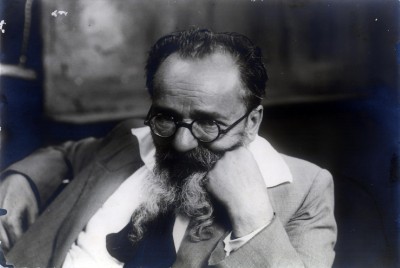
Sculptor Boris Schatz (1867-1932) founds the Bezalel School of Arts and Crafts in Jerusalem to create a completely Jewish art blending Jewish motifs, Near Eastern design, and art nouveau forms. Jews traveling to Palestine return with the school’s jewelry, rugs, metalwork, and wood carvings, reminders of the Land of Israel. Bezalel products are exhibited at expositions in Baltimore in 1914 and 1931, and also at local Zionist stores such as Fannie Drazen’s in East Baltimore.
1909
Henrietta Szold takes her first trip to Palestine, where she is appalled by the health conditions of the Jewish and Arab residents. Upon her return, she organizes Zionist study groups and travels around the United States, speaking about Palestine.
1912
In New York, Henrietta Szold founds and is elected first President of the Hadassah Chapter of the Daughters of Zion. Two years later, the organization is re-named Hadassah, the Women’s Zionist Organization of America. Hadassah funds and organizes progressive health and social services in the Land of Israel which eventually grow into the Hadassah Hospital, while Hadassah becomes the largest Jewish membership organization in the United States. A branch of Hadassah is established in Baltimore in 1913.
1915
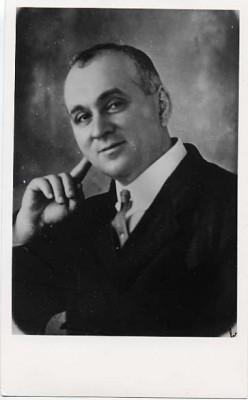
Baltimoreans gain national attention by sending a thousand tons of food to starving Jews in Palestine. Louis H. Levin travels with the ship S.S. Vulcan to Palestine and supervises distribution of the food.
1917
In June, Zionists from around the country gather in Baltimore for a week-long meeting featuring leading Zionist thinkers and speakers. The convention and its distinguished guests inspire mass demonstrations in the City and inspire local Zionist activists and organizations.
Great Britain issues the Balfour Declaration on 2 November, declaring that Britain views “with favor the establishment in Palestine of a national home for the Jewish people.” When Great Britain organizes the Jewish Legion to help free Palestine from the Turks, Dr. Herman Seidel serves as a recruiting officer for the Legion in the Baltimore-Washington area. About 90 young Baltimoreans volunteer to serve. The Jewish Legion becomes the first Jewish “army” in modern times.
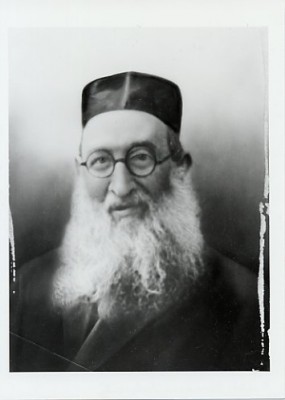
A branch of the religious Zionist organization Mizrachi is organized in Baltimore by Rabbis Shepsal Schaffer, Avraham N. Schwartz, and Reuben Rivkin. Mizrachi, founded in 1902 as the religious faction of the World Zionist Organization, is based on the idea that Torah should be the guiding force of a Jewish state in Palestine
1918
Dr. Harry Friedenwald is appointed chairman of the Zionist Commission, intended to help realize the creation of a Jewish national home in Palestine. The next year, Dr. Friedenwald, Rudolph Sonneborn, and others travel on a medical mission to Palestine.

Johns Hopkins University students and faculty organize the Collegiate Zionist Society of Baltimore. The Society holds a weekly study circle and monthly meetings to publicize Zionist ideas on campus and to raise funds for the cause. Professors David Blondheim, Aaron Ember, and Aaron Schaffer serve as faculty leaders and contribute to national college-level Zionist efforts. Jonas Friedenwald (1897-1955) serves as President of the Society during his years at Hopkins and later assists with the development of the Hebrew University-Hadassah Medical School.
1920
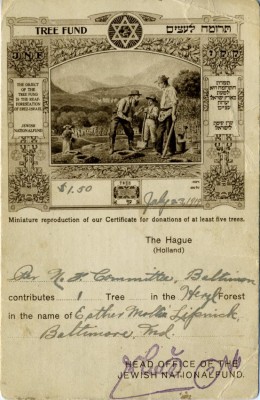
Baltimore establishes its first Jewish National Fund Committee. The JNF was established in 1901 to purchase land in Palestine for Jewish settlement. By 1904, it had enough land for its first village, Kfar Hittim.
1920s
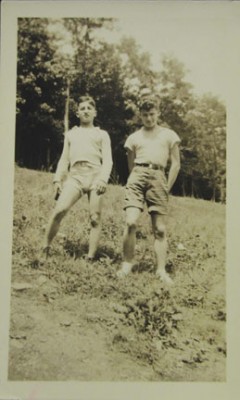
Zionist youth groups establish summer programs, with outings in Druid Hill Park. In the 1930s, the Labor Zionist Habonim and the Religious Zionist Hashomer Hadati share a Severn River shore property owned by Sigmund Sonneborn. Today, Zionist education remains central to Habonim Camp Moshava near Bel Air, where campers speak Hebrew, practice Labor movement ideology, and enjoy Israeli dancing, theater, and arts.
1926
Seven women from the Labor Zionists (Poale Zion) organize a Baltimore chapter of Pioneer Women, the Women’s Labor Zionist Organization of America (today known as NA’AMAT USA). Through the years, the organization supports a variety of projects aimed at improving conditions for women and children in Palestine and, later, Israel. In 1972 the group opens a “Baltimore Day Care Center” in S’derot. Today, many Baltimoreans continue to participate in NA’AMAT USA and its mission to support the women and children of Israel.
1933

Henrietta Szold, now living in Palestine, organizes and supervises the Youth Aliyah movement to bring young Jewish refugees from Nazi Germany to Palestine. The new organization secures visas, provides transportation, and helps to settle the new arrivals in Jewish agricultural settlements. The movement rescues 11,000 young German Jews from the Nazis.
1942
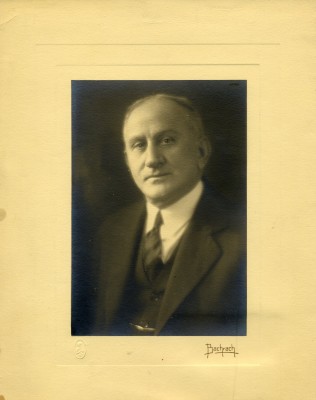
The American Council for Judaism is founded primarily by Reform Jews to combat Jewish nationalism and oppose the establishment of a Jewish state. Baltimore philanthropist Aaron Straus (1865-1958) is a key financial backer and Rabbi Morris Lazaron (1888-1979) is one of its ideological spokesmen.
1945
On 25 June, Baltimorean Rudolf Sonneborn brings together Jewish industrial leaders in a New York meeting with David Ben-Gurion, then chairman of the Jewish Agency Executive in Palestine. In the 1950s, Sonneborn serves as national chairman of the United Jewish Appeal.
1947
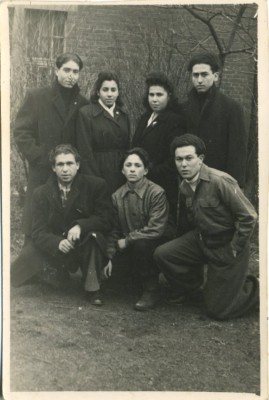
Baltimore Jews purchase the S.S. President Warfield, a Chesapeake Bay steamer, re-fit the ship, and load a cargo of guns and ammunition. The ship sails to France where it embarks 4,530 Holocaust survivors destined for Palestine. The ship, re-named Exodus 1947, is intercepted by the British and its passengers are interned. The international furor that follows makes the Exodus “the ship that launched a State.”
1948
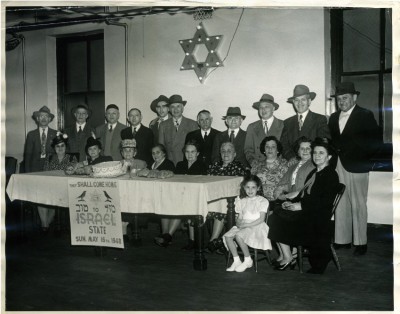
The State of Israel is declared on 14 May. On the 19th, Baltimore Jews rally in support of the new state outside of Beth Tfiloh Synagogue. Speakers include Baltimore Mayor Thomas D’Alesandro, Jr., who declares that “America must rally to the support of the new Jewish state, morally and in every way. As Americans we can do no less.” A second rally is organized at the Fifth Regiment Armory on 3 June, drawing 6,000 people at which actor Murray Slatkin reads a poem by Baltimorean Karl Shapiro: “When I think of the battle for Zion / I hear the drop of chains . . .”
